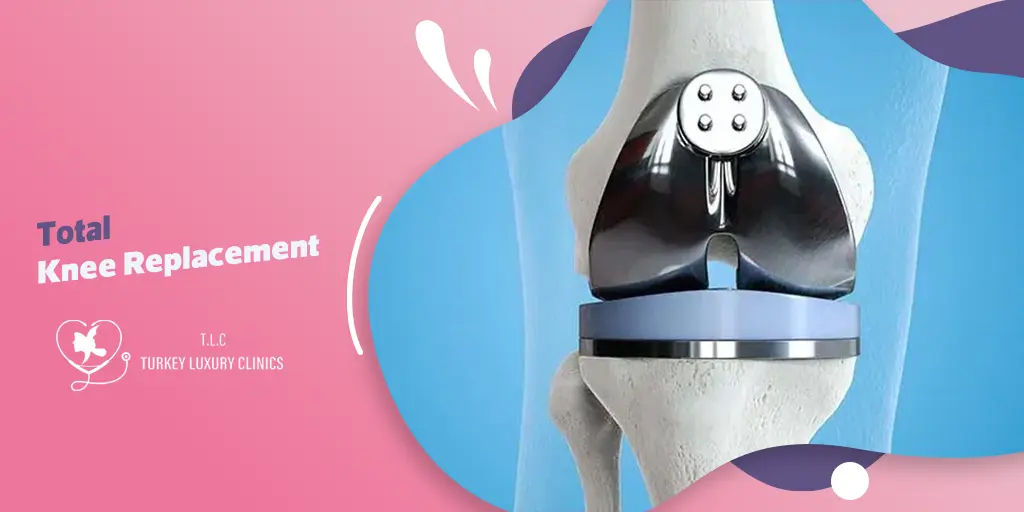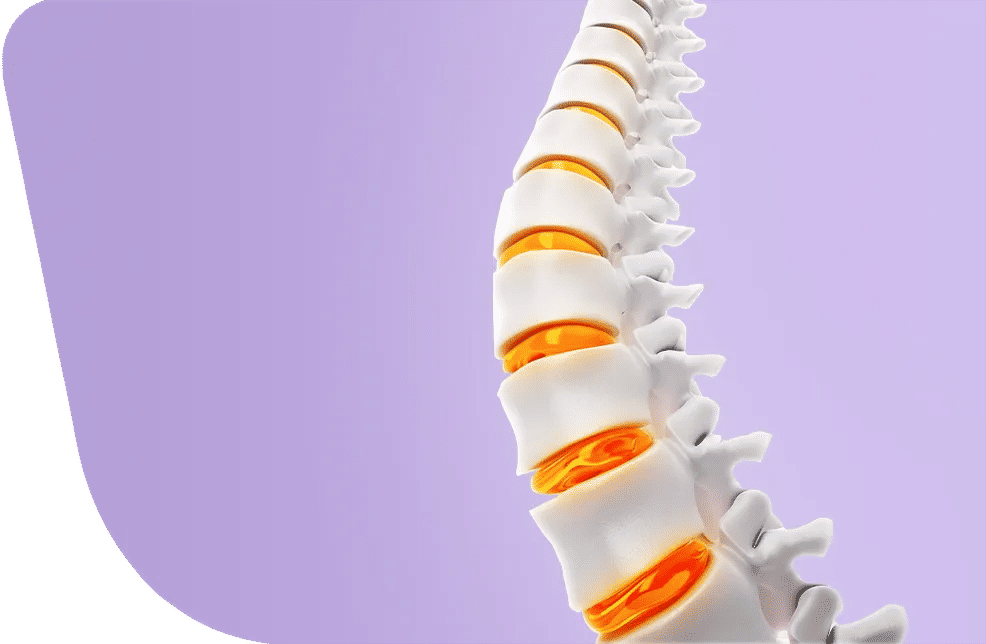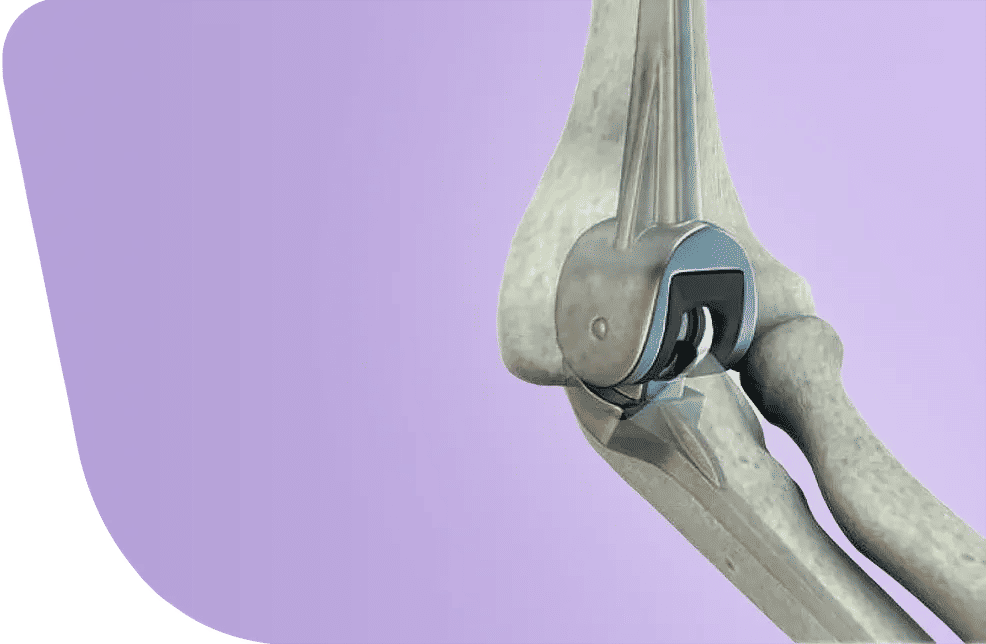- - What is Total Knee Replacement Surgery?
- - How Much Does Total Knee Replacement Cost in Turkey 2025?
- - Knee joint Replacement Indications
- - Is Total Knee Replacement Right for Me?
- - Total Knee Replacement Surgery Step by Step in Turkey
- - Total Knee Replacement Recovery: Timeline & What to Expect
- - Total Knee Replacement Results and Success Rate
- - Are there any Complications after Knee Replacement?
- - Get Total Knee Replacement in Turkey with Turkey Luxury Clinics
- - FAQs About Total Knee Replacement in Turkey
Total Knee Replacement in Turkey is a surgical procedure in which the damaged knee joint is replaced with a prosthetic implant to restore normal movement and reduce pain. Turkey has become a leading destination for medical tourists seeking this procedure.
By offering costs starting from around $8,000 and providing advanced technologies along with skilled surgeons, Turkey has succeeded in combining affordability with distinguished quality of care.
With Turkey Luxury Clinics, you can enjoy an affordable, seamless, and comfortable total knee replacement experience. Discover everything you need to know here and contact us today for a free consultation.
What is Total Knee Replacement Surgery?
Total knee replacement surgery-also known as total knee replacement arthroplasty- is a major orthopedic procedure in which a damaged knee joint—typically the cartilage and underlying bone surfaces—is replaced with an artificial prosthetic device. The prosthesis usually consists of metal and plastic components designed to mimic the natural movement of the knee, relieve pain, and restore normal function.
Read more about indication of knee replacement
How Much Does Total Knee Replacement Cost in Turkey 2025?
The cost of total knee replacement surgery in Turkey starts from $8,000 for a single knee (unilateral TKR), which is almost 50% lower compared to the US or UK.
For example, the cost of total knee replacement in the US, UK, and Canada starts from around $20,000, while in European countries it ranges between $12,000 and $22,000.
Cost of Different Types of TKR Surgeries
1. one knee TKR: The total knee replacement surgery u/l treatment cost in Turkey usually ranges between $8,000 and $15,000. This cost applies whether you are having a left total knee replacement or a total right knee replacement.
2. Both knees TKR: For patients needing both knees replaced, the total knee replacement b/l treatment cost in Turkey is around $15,000 to $21,000, which is still much cheaper than in the US or UK, where prices often start from $20,000.
3. Robotic TKR Surgery: This advanced procedure, where a surgeon uses robotic technology for higher precision, comes at a slightly higher price. The cost of robotic total knee replacement surgery in Turkey ranges from $10,000 to $15,000 for a single knee.
Cost of Different Types of Knee Prosthetic Implants
The types of prosthetic implant used on total knee replacement differ in design and material, and the choice of implant can influence the final cost.
1. Metal-on-Plastic:
This is the most common option, featuring a metal femoral component (usually cobalt-chromium or zirconium) paired with a polyethylene tibial insert. It offers great durability and compatibility.
Cost of metal-on-plastic knee implants in Turkey: approximately $8,000 to $13,000 for unilateral TKR.
2. Ceramic-on-Plastic:
Uses a ceramic femoral component (or metal with ceramic coating) combined with a polyethylene spacer. It’s often chosen by patients with metal allergies or those seeking longer durability.
Cost of ceramic-on-plastic knee implants in Turkey: about $9,000 to $14,000 for a single knee replacement.
3. Metal-on-Metal:
Both femoral and tibial components are made of metal, but this type is rarely used in modern knee replacements due to higher wear risks.
Cost of metal-on-metal knee implants in Turkey: typically $9,000 to $15,000.
4. Ceramic-on-Ceramic:
Both components are ceramic, which makes them highly resistant to wear and very biocompatible, though they can sometimes produce noise.
Cost of ceramic-on-ceramic knee implants in Turkey: ranges from $10,000 to $16,000 for unilateral TKR.
Medical Tourism Packages for Knee Replacement in Turkey
Medical tourism packages for knee replacement in Turkey typically range from $6,500 to $17,000, depending on the clinic, procedure, and services included.
These packages usually cover the surgery, anesthesia, hospital stay (4–7 days on average), medications, follow-up care, and airport transfers.
Some premium packages may also include hotel accommodation and the assistance of a private nurse.
Knee joint Replacement Indications
We all know that arthritis can be a real pain! It's the most common cause of chronic knee pain and disability. Most knee problems are linked to three main types of arthritis:
- Osteoarthritis: The "wear-and-tear" arthritis that usually affects people over 50 but can also occur in younger individuals.
- Rheumatoid arthritis: A chronic inflammatory condition where the synovial membrane becomes thickened, damaging the cartilage and leading to stiffness and pain.
- Posttraumatic arthritis: Occurs after serious knee injuries, such as fractures or ligament tears, which gradually damage the cartilage.
- Severe knee pain or stiffness that limits everyday activities such as walking, climbing stairs, or getting in and out of chairs.
- Inability to walk more than a few blocks without pain, sometimes requiring the use of a cane or walker.
- Chronic knee inflammation and swelling that does not improve with rest or medications.
- Visible knee deformity, such as bowing inward or outward.
Is Total Knee Replacement Right for Me?
Patients considered suitable for total knee replacement joint surgery are those who experience severe knee pain, limited mobility, and a reduced quality of life. To be qualified for this surgery, you should meet the following conditions:
1.Tried non-surgical treatments without success: This includes analgesics, anti-inflammatory medications, corticosteroid injections, and lifestyle changes, yet you still suffer from persistent pain.
2.Severe joint damage: Your knee has advanced degeneration or deformity that cannot be managed with traditional medical therapies.
3.Good overall health: You have no serious medical conditions that could increase surgical risks.
4.Healthy weight or reasonable BMI: Maintaining a normal or near-normal body weight improves recovery and outcomes.
5.No contraindications: You are free from conditions that would prevent you from undergoing total knee replacement surgery.
Total Knee Replacement Surgery Step by Step in Turkey
Total knee replacement is a major open orthopedic surgery performed under general or spinal anesthesia. The total knee replacement surgery time typically takes about 2 to 4 hours. Below is a step-by-step overview of how total knee replacement surgery is typically performed.
Knee Images before knee Replacement?
- Medical history. Your orthopedic surgeon will ask you about your overall health and your knee pain and how it affects your ability to function.
- Physical examination. This will look at how well your knee moves, how stable it is, how strong it is, and how your leg is aligned overall.
- X-rays. These images help figure out how bad the damage is and what kind of deformity you have in your knee.
- Other tests. Sometimes, you might need to do a blood test or have an MRI scan to get a better idea of what's going on with your knee bone and soft tissues.
How to Prepare for Total Knee Replacement Surgery?
Your surgeon will provide you with a list of detailed instructions about what to do and what to avoid before the surgery. These instructions usually include:
- Stopping certain medications, such as blood thinners, for 1 to 3 days before surgery (depending on the type of medication).
- Stopping eating foods for 6–8 hours before surgery,
- It is allowed to drink clear liquids like water may be allowed up to 2 hours before anesthesia.
- For overweight patients, losing weight is essential for proper healing and for prolonging the lifespan of the prosthetic knee.
- Having reasonable expectations about results, recovery time, and how long you’ll need to rest or take off work.
- Planning for a healthier lifestyle and a safe home setup to support a successful recovery after total knee replacement.
How is a Total Knee Replacement Done?
- Getting general anesthesia: The patient receives either general anesthesia (to sleep during the surgery) or regional anesthesia (like a spinal block) with some sedation.
- Making the incision: The surgeon makes an incision at the front of the knee to reach the joint. This incision is usually around 8 to 12 cm long.
- Removing damaged parts: The damaged parts of the bone and cartilage are removed to prepare the joint.
- What is replaced in a total knee replacement? The damaged cartilage and bone from the thighbone (femur) and shinbone (tibia) are removed. The underside of the kneecap (patella) may also be resurfaced to remove damaged tissue and fit the artificial joint.
- Placing the prosthetic knee: Metal components are attached to the prepared bone surfaces, usually using bone cement. A plastic spacer is inserted between the metal components to allow smooth movement.
- Incision closure: The incision is closed with stitches or staples, and the knee is bandaged.
- Bilateral total knee replacements can be done either simultaneously (at the same time) or in stages (separate surgeries).
Total Knee Replacement Recovery: Timeline & What to Expect
Patients often stay in the hospital for 1–3 days after surgery, but some may return home the same day if there are no complications. It’s important to arrange for someone to assist you at home and provide transportation.
Initial recovery period (first few days up to 2 weeks):
- Rest for 1–2 days but start gentle movement and walking with assistance within 24–48 hours to prevent blood clots and stiffness.
- Take care of the incision by keeping it clean, avoiding water, and changing dressings as instructed. Surface healing typically occurs within 10–14 days.
- During recovery from total knee replacement pain is usually mild to moderate and can be managed with prescribed medications.
Recovery period between 2 and 6 weeks post-surgery:
- Significant improvement in pain, mobility, and overall function.
- Patients can return to:
- Normal daily activities: within 3–6 weeks.
- Work: after 4–6 weeks for desk jobs and up to 3 months for physically demanding jobs.
- Exercise (low-impact): such as walking, swimming, or cycling, after 6–12 weeks.
- Driving: usually after 4–6 weeks, once it is safe to control the pedals and pain medications are no longer needed.
Prolonged recovery period 3 to 6 months later
Full recovery from a total knee replacement usually takes 6 to 12 months, although most patients experience noticeable improvement in pain and mobility within the first 3 months.
Related topics: Partial versus Total Knee Replacement: Which is Better for You?
Rehabilitation in Total Knee Replacement Recovery
Rehabilitation and physiotherapy are essential after total knee replacement. A structured program—often starting within 24 hours of surgery—helps restore joint movement, strengthen muscles, and ensure long-term implant success.
These steps involve early mobilization, use of compression therapy, blood clot prevention, and guided physical therapy.
Total Knee Replacement Results and Success Rate
Total Knee Replacement in Turkey has a high success rate of around 95%, with most patients achieving long-term pain relief, improved mobility, and the ability to resume daily activities with greater ease.
Successful surgery with proper care lasts over 10 years, and can reach around 20 years with good function.
In cases of failed TKR, patients may consider Revision Knee Replacement Surgery for improved outcomes.
Are there any Complications after Knee Replacement?
The complication rate following total knee replacement is lower than you might think. Fewer than 2% of patients experience serious complications like a knee joint infection.
It is even less common to experience significant medical issues such as a heart attack or stroke. There's a greater chance of complications with chronic illnesses. It's not common, but when these complications arise, they can prolong or limit full recovery.
Here are some of the main complications that may arise after surgery:
- Infection
- Blood clots
- Implant problems
- Continued pain
Get Total Knee Replacement in Turkey with Turkey Luxury Clinics
Planning a total knee replacement in Turkey? With Turkey Luxury Clinics, you’ll have access to leading orthopedic surgeons, advanced medical technologies, and all-inclusive packages designed for your comfort and budget. Contact us today for a free consultation and start your journey to pain-free mobility.












.webp)
.webp)
.webp)
.webp)

